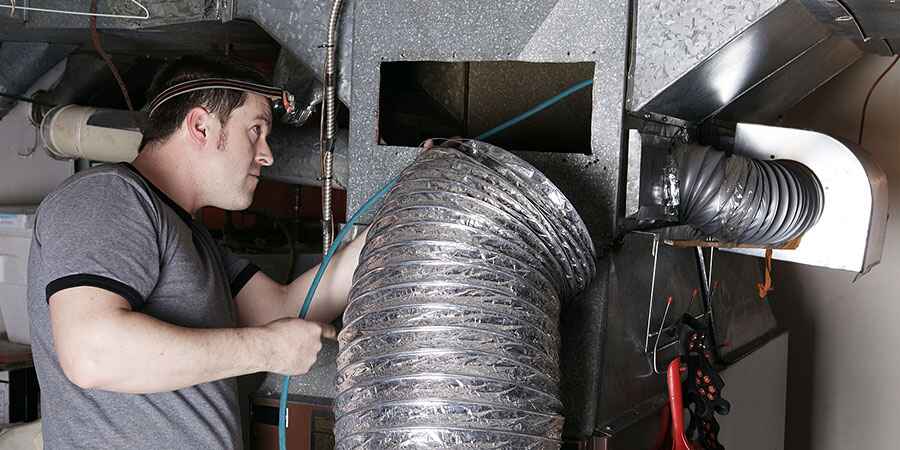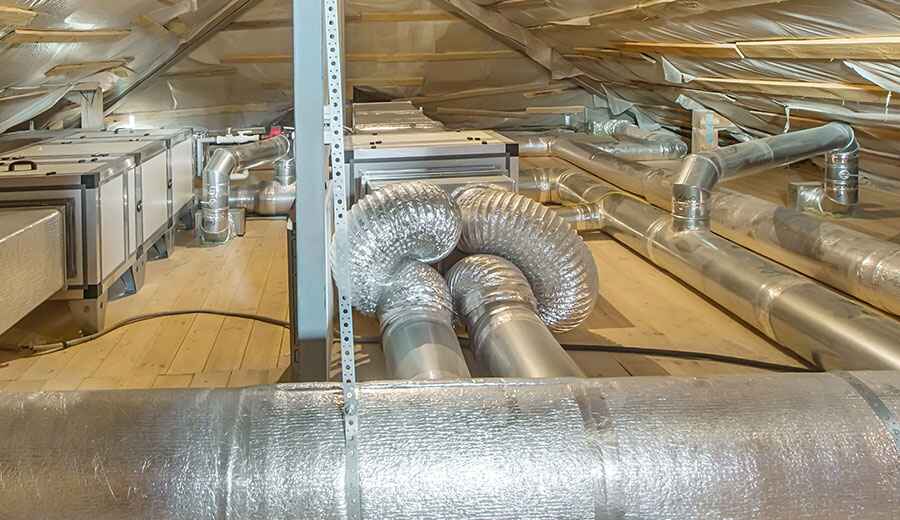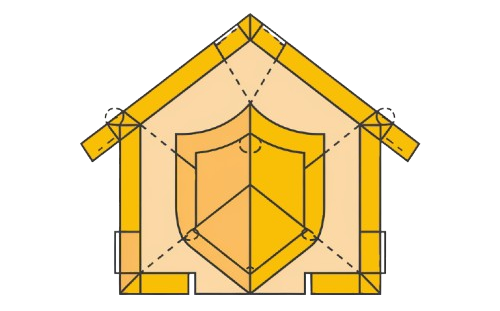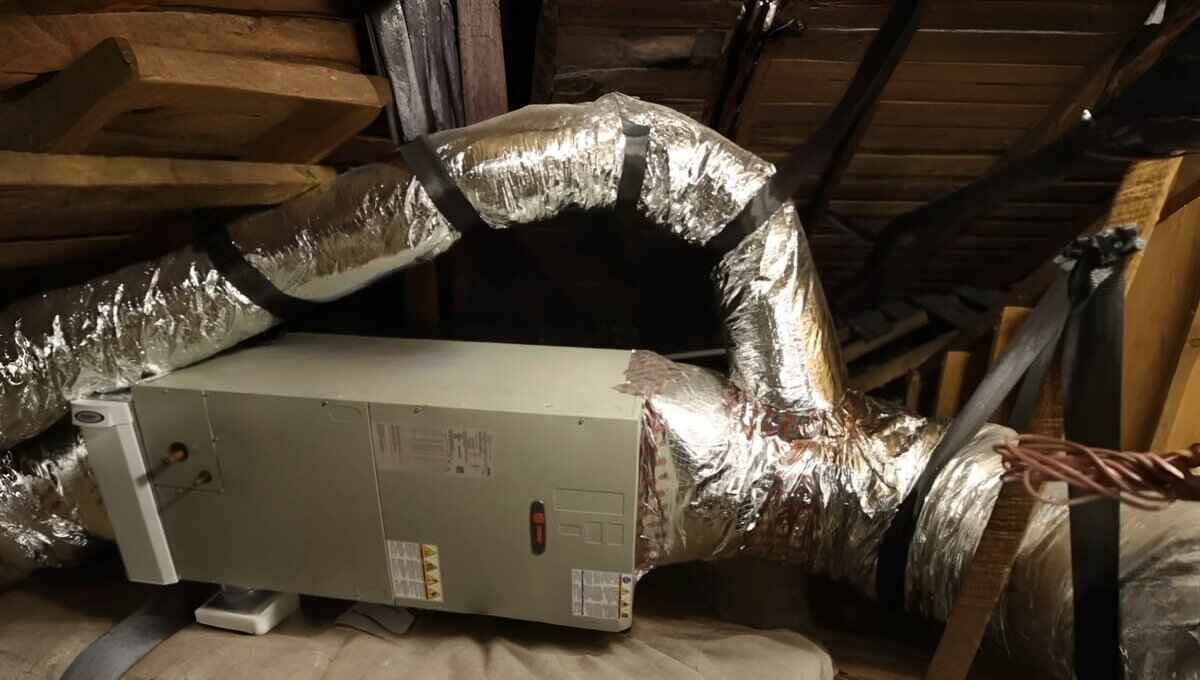Air ducts play an essential part in your home’s ventilation system, helping your HVAC unit carry air from room to room. Homeowners often overlook their ductwork because it’s hidden, but without them, your system wouldn’t work properly. If it’s been a while since you had them installed, you’re probably wondering whether it’s time for a repair or a replacement. The truth is, ducts need attention and maintenance, and there comes a point when repairs just won’t cut it.

Although ductwork is often forgotten due to its placement, it can cause issues over time. If you notice signs like poor airflow or increased energy bills, it might be time to inspect your air ducts. You may need to outright replace them if they are damaged or old, especially if a simple repair no longer solves the problem. After all, how often do you even see those ducts? It’s easy to forget about them, but they’re crucial for your home’s comfort and efficiency.
When Do You Need to Replace Ductwork?
Experts recommend that you replace ductwork every 15 years because the materials deteriorate over time. When this happens, it greatly impacts the performance of your HVAC system, which can lead to a reduction in indoor air quality. Although replacing ductwork may seem like an expensive hassle, it’s definitely worth it if your system is on the older side. Old ducts can cause your HVAC system to work harder, making your home less efficient and reducing air quality.
Signs Your Ductwork Needs Replacing
If you’re not sure how old your ductwork is, don’t worry — it will give signs when it’s time for replacement. You may want to call a professional if you start to notice any of the following happenings within your system.

Inconsistent Temperatures & Cooling Performance
If you notice certain rooms in your home are consistently hot or cold, regardless of how you adjust the thermostat, it’s a sign of duct problems. Over time, ducts develop leaks, gaps, or even become disconnected, which can lead to airflow imbalances. This uneven temperature distribution could also be caused by a clogged air filter or obstructions within the system. Always try checking the air filter first and changing it if necessary, but if that doesn’t do the trick, it’s best to have a licensed HVAC technician test the ductwork.
Issues like improper airflow, disconnected ducts, or potential blockages can impact your HVAC system’s performance. Upgrading the system or replacing damaged ducts will help ensure conditioned air reaches every corner of your home. This not only provides consistent comfort, but also improves energy efficiency. Ductwork that isn’t functioning as it should can cause several different issues, and depending on the severity, it may need to be replaced.
Odd Noises Coming from Ductwork
One of the surest signs that something is not operating well in your HVAC system is when it begins to make strange noises you’ve never noticed before. Sounds like rattling or clanking within your ductwork may be a sign that the ducts are loose or not properly secured. If you hear whistling sounds, it’s often a big clue that there’s a leak somewhere in the system that needs to be patched immediately. Several leaks or damaged ducts can mean that a repair might be too little, too late, and a full replacement may be necessary. Issues like clogs, damage, or loose connections aren’t always visible, but odd noises are usually a good indication that a problem is arising and needs attention.
Damaged Ducts That Need Immediate Attention
Over time, your air ducts naturally wear out and can suffer damage that interferes with the effectiveness of your cooling system. You might notice holes, tears, or rips in the ductwork, or sections hanging by a thread, bent, or tangled. These are all signs that you need to call a professional right away to take a closer look. Your ducts are carefully designed and strategically placed to ensure your HVAC unit works properly, but damages like holes and cracks can drastically reduce performance. A trained HVAC technician can assess the damage and determine whether a repair or complete replacement would be the best option for your home.
Terrible Indoor Air Quality
If someone in your home has chronic breathing issues such as asthma or allergies, your damaged ductwork may be the culprit. Ducts can allow pollutants, like dust, debris, chemicals, and mold, to escape into your living spaces, impacting your indoor air quality (IAQ). This can raining down allergens and contaminants that should otherwise remain in the system.
You may notice unpleasant odors or an increase in allergens despite regular cleaning. Old, worn-out ducts can harbor harmful substances and circulate them throughout your home, affecting health and comfort. Replacing damaged ductwork can help alleviate these issues and promote a healthier environment.
Increased Energy Bills
If you notice your energy bills continuing to climb every month, even though you’re barely home, your ductwork could be to blame. Leaky ducts allow conditioned air to escape before it reaches its intended destination, which makes your HVAC system work overtime. This causes more energy consumption and higher monthly costs.
Damaged or old ductwork that isn’t sealed well can literally send money out the window — or rather, through holes in your ducts. Replacing leaky ducts may seem like a major financial inconvenience, but it can pay off in the long run by reducing energy usage and saving you significant money over time.
Poor Airflow
Airflow is an essential part of a properly functioning HVAC system, and ductwork plays a significant role in keeping your living spaces efficiently cooled. When ductwork becomes damaged, filthy, or clogged, it can cause your home to suffer from high energy bills and discomfort. If you notice airflow depleting or your system straining to maintain temperatures, it’s likely time for a replacement. Old or clogged ducts make your HVAC system work harder, which leads to poor cooling performance and higher costs over time.
Also Read: How to Increase Airflow in HVAC?
Age of Your Ductwork
Much like an AC unit, air ducts can last upwards of 10 years with proper care, but over time, the seals, joints, and seams in your ductwork become susceptible to deterioration. This damage can cause many problems for your HVAC system, such as energy overuse, poor performance, and discomfort within your home. Regular wear and tear is unavoidable, which is why it’s important to have your ductwork checked every 10 to 15 years. Newer systems use improved materials and designs that enhance efficiency and durability, making a replacement well worth it if your ducts are old and causing costly problems.
Pest Infestations in Ductwork
Pests, rodents, or insects can easily find their way into your home through damaged or poorly sealed ducts. If you’ve been dealing with frequent infestations, it could be a sign that your ductwork needs attention. New air ducts with proper seals and insulation can help prevent unwanted visitors from entering through the HVAC system. Keeping your ducts sealed is crucial to maintaining a clean and efficient HVAC system, as pests can cause further damage and affect air quality inside your home.
Mold & Odors in Your Ductwork
Mold is always a severe problem, especially when it gets into your ductwork. Every time your HVAC system kicks on, it can spread mold spores and foul odors throughout your home, leading to intense allergies or potentially serious health complications. If you smell something foul and fear your ducts may have mold, it’s best to contact a professional immediately. Although duct cleanings can help, a full replacement is often the best solution to prevent ongoing health risks and further issues.
Ductwork and Home Renovations
If you’re planning a significant renovation or remodeling project, it’s an excellent opportunity to assess your ductwork. Depending on the changes you’re making to your home’s layout, you might need to reconfigure or replace the ducts to ensure optimal airflow. Remodeling is the perfect time to evaluate whether your ductwork supports the new design and to address any issues before they become costly problems.
Poor Ductwork Design or Installation
Ductwork systems need to be strategically designed and installed to cool every space optimally while maintaining energy efficiency. If your ducts were improperly installed, it can lead to performance issues, making it necessary to consider replacement. Even with a brand-new AC unit that perfectly fits your home, poor duct design can make optimal comfort impossible. If you’re experiencing hot or cold spots and less than satisfactory airflow, it’s time to hire a professional to check out your system and ensure your HVAC setup is working efficiently.
Also Read: How to Install Ductwork in Attic?
Maintenance Tips
- To extend the life of your ductwork, consider regular maintenance, such as inspecting and cleaning dirty air ducts every few years.
- Seal any leaks promptly to prevent energy loss and keep your HVAC system functioning properly.
- Ensure your HVAC system is properly maintained, as it plays a crucial role in keeping your ductwork efficient.
Final Thoughts
Replacing ductwork is essential when signs like poor airflow, inconsistent temperatures, or increased energy bills arise. Regular maintenance, such as cleaning ducts, sealing leaks, and ensuring your HVAC system is maintained, can extend the life of your ducts. However, if your ductwork is old, damaged, or improperly installed, replacement is often necessary to ensure your home remains comfortable and efficient. If you’re considering replacement, get multiple quotes from professionals to better understand your options and costs.
FAQ
How Do I Know When to Replace My Ductwork?
You’ll know your ductwork needs to be replaced if you notice signs of damage like cracks, holes, or leaks, or if there’s inconsistent airflow or poor cooling and heating performance. An increase in dust, allergens, or other pollutants in your home can also be a sign of duct failure that requires immediate attention.
How Often Should Ducts Be Replaced?
Ductwork typically requires replacement every 10 to 15 years, as delaying can compromise airflow and reduce energy efficiency in your home.
Is It Worth Replacing Ductwork?
Replacing old ductwork that has become cracked, dirty, or compromised is worth it. It prevents your HVAC system from working harder than necessary to heat or cool your home. Installing fresh ductwork with proper insulation ensures your heating and cooling system runs as efficiently as possible.
What Is the Lifespan of Air Ducts?
Air ducts typically have a maximum lifespan of 20 to 25 years but start to deteriorate around year 15. If your ductwork is more than 15 years old, you may need to have it inspected to determine if it’s time to replace it. Older ductwork, especially past 25 years, almost certainly requires replacement.

